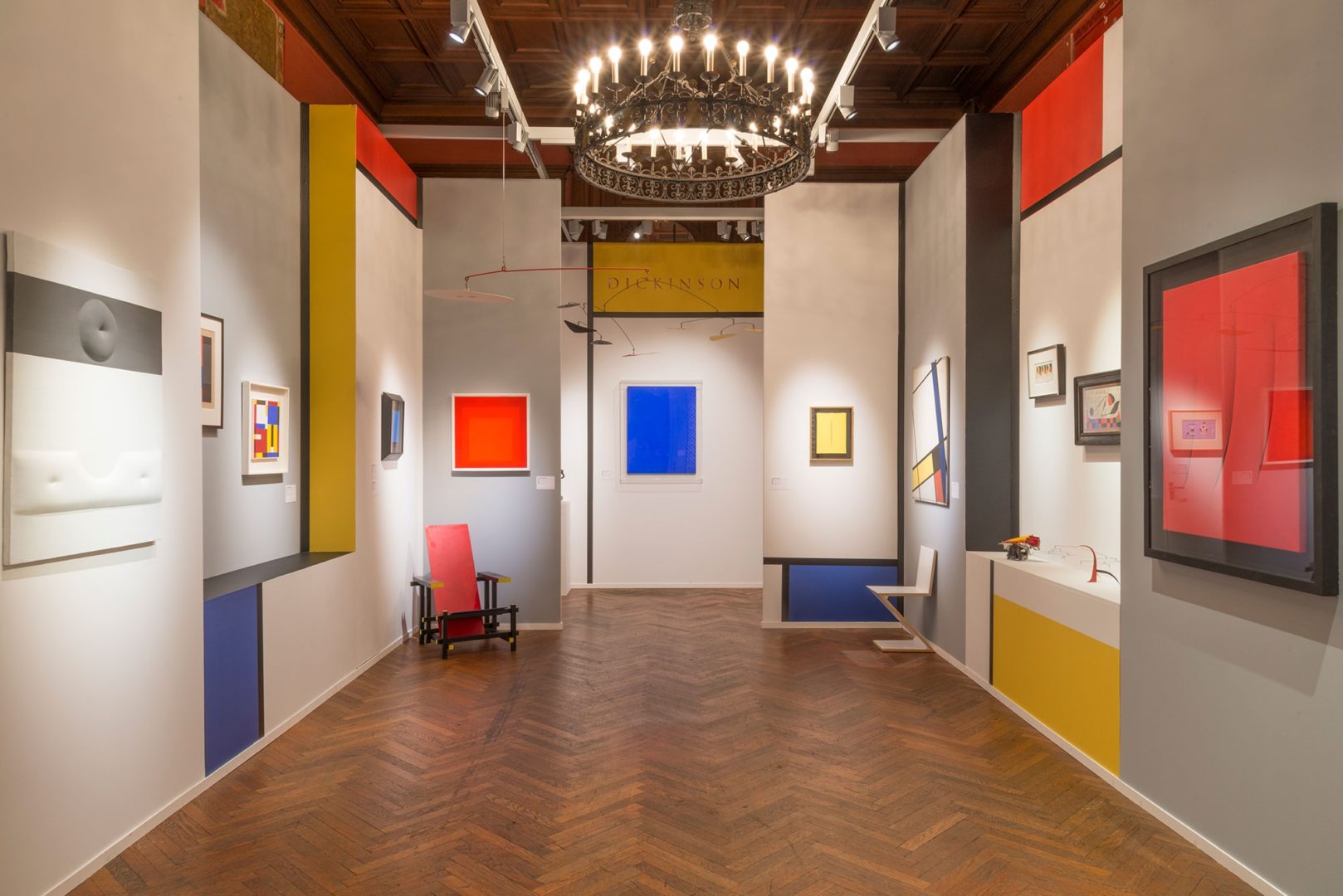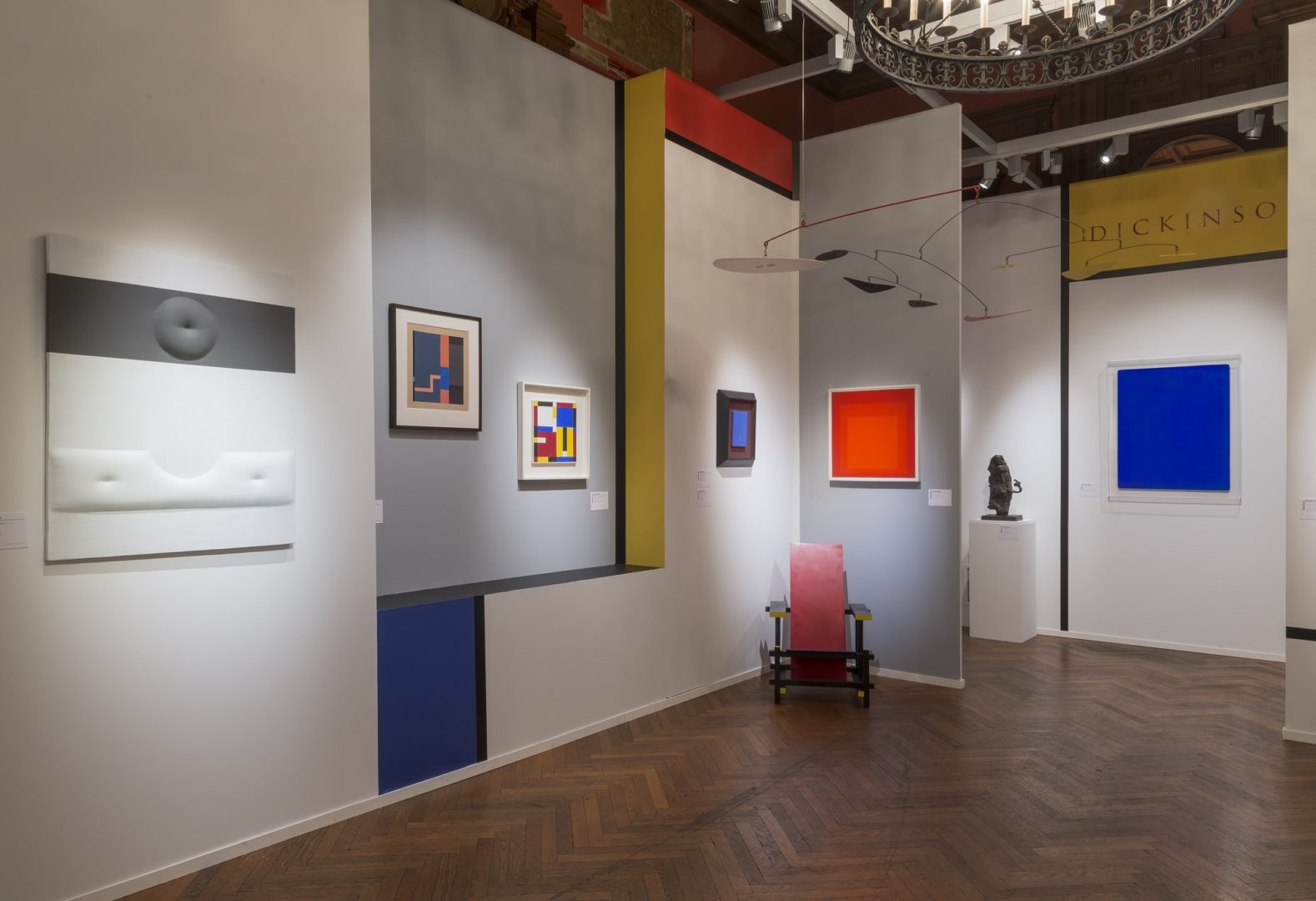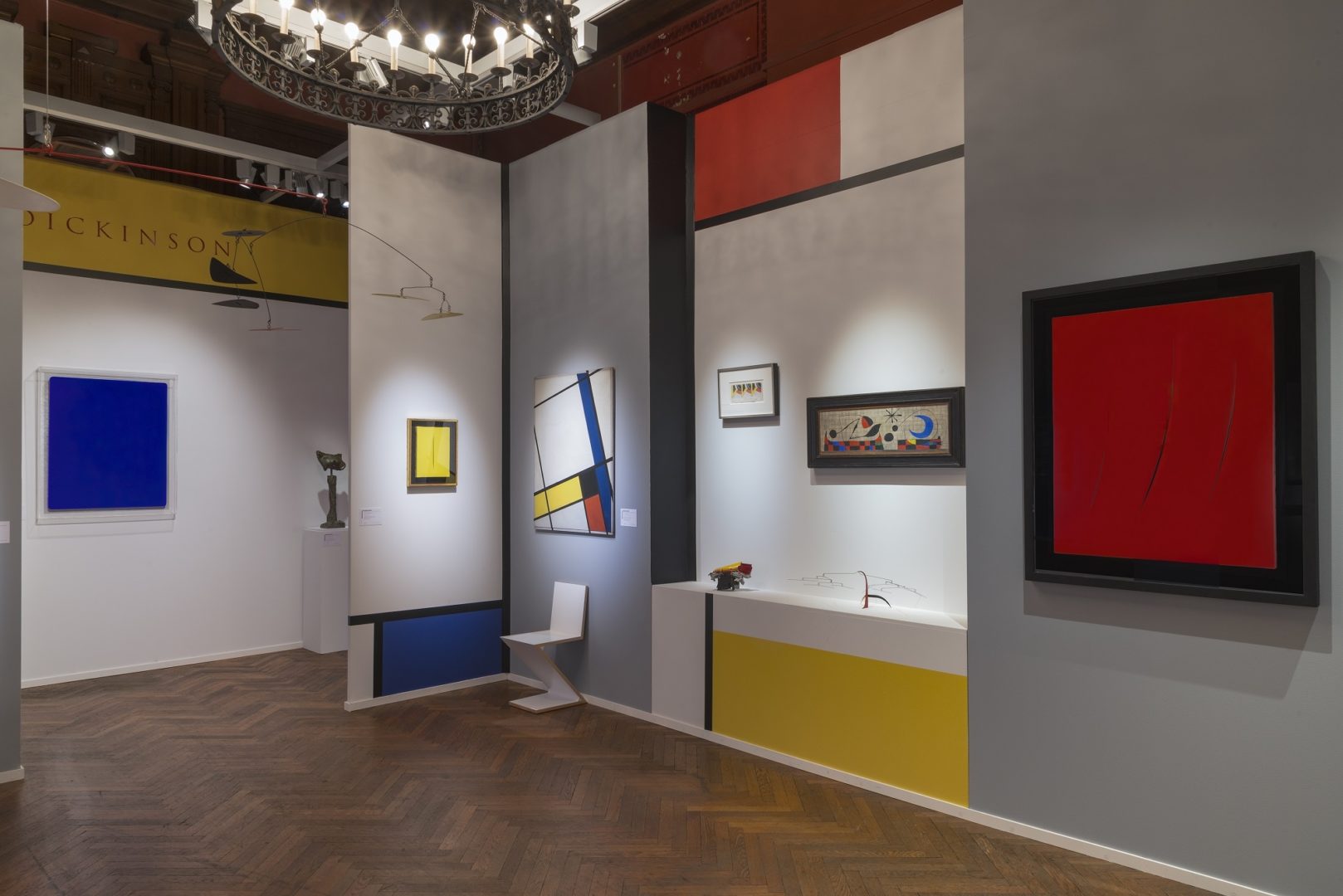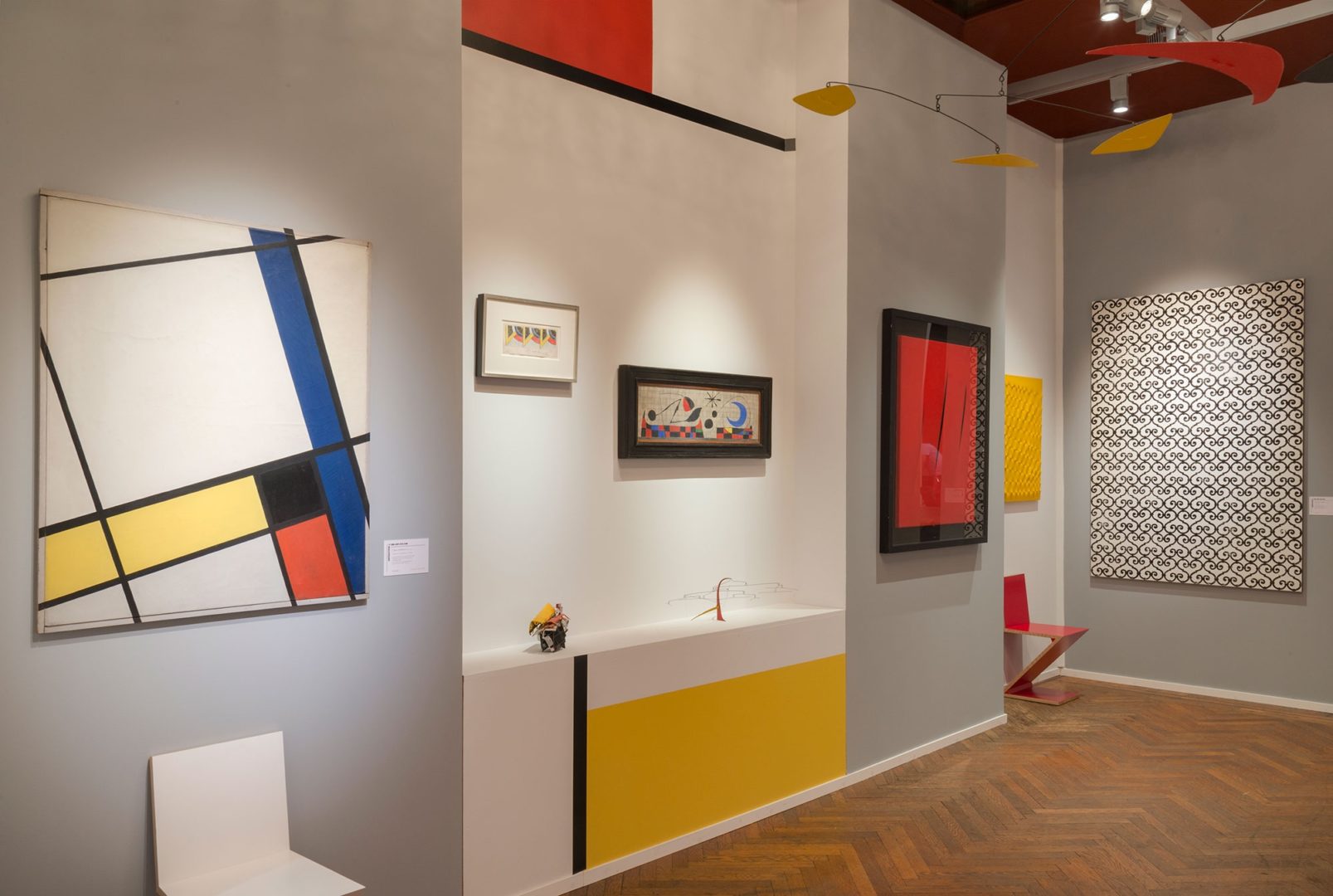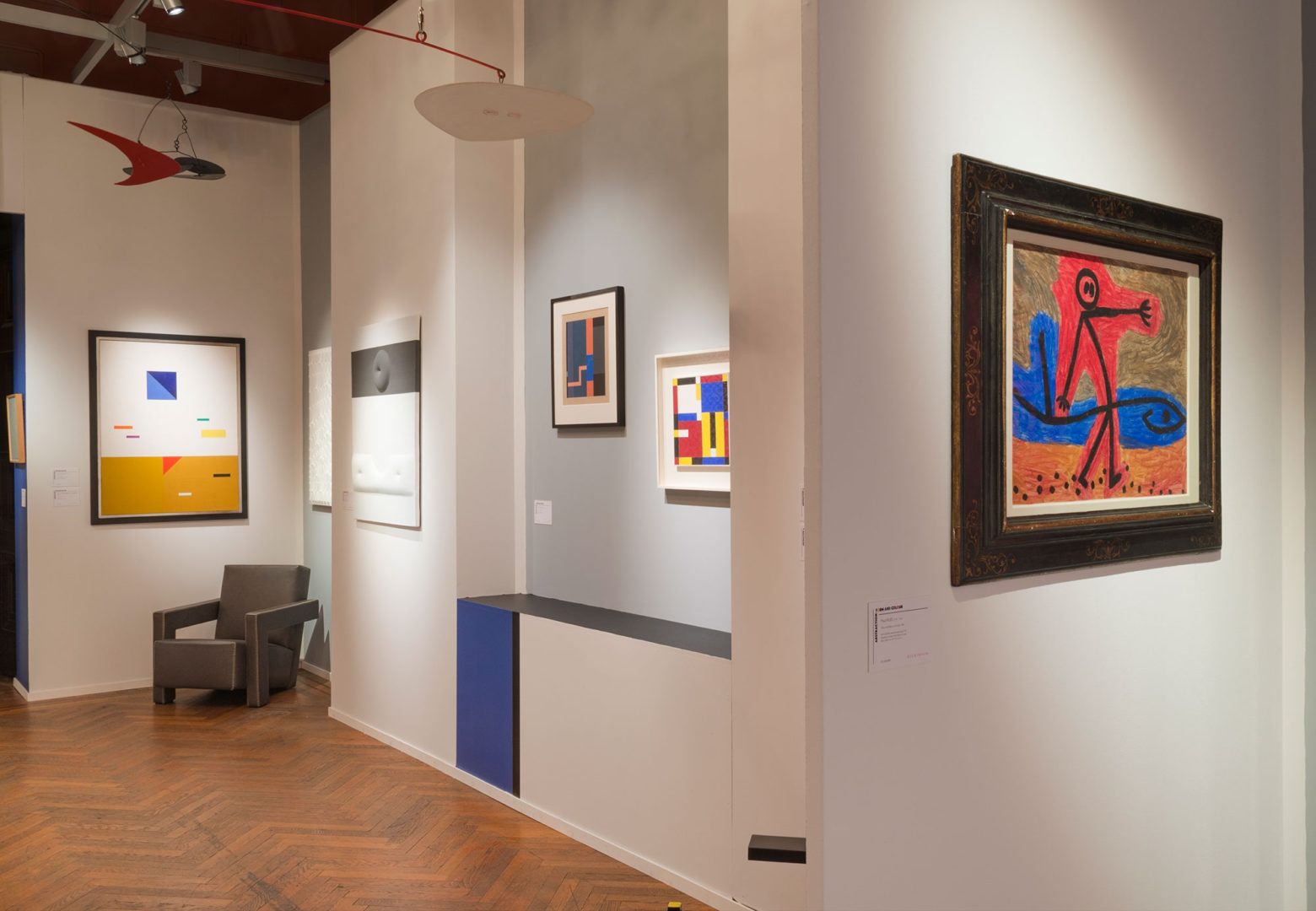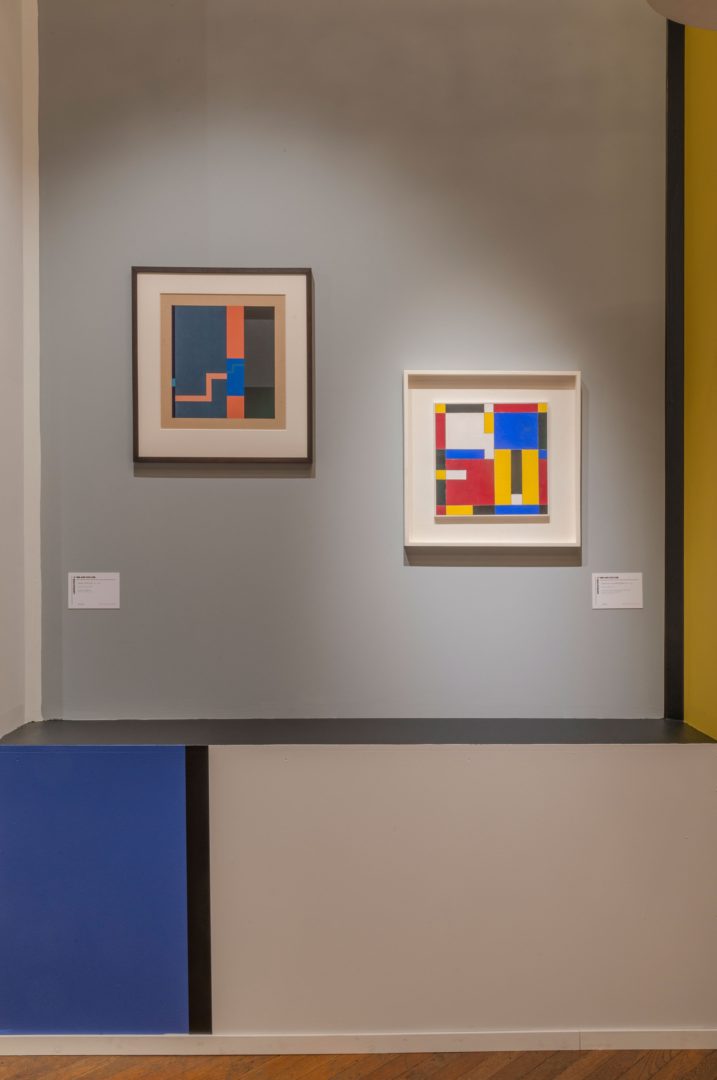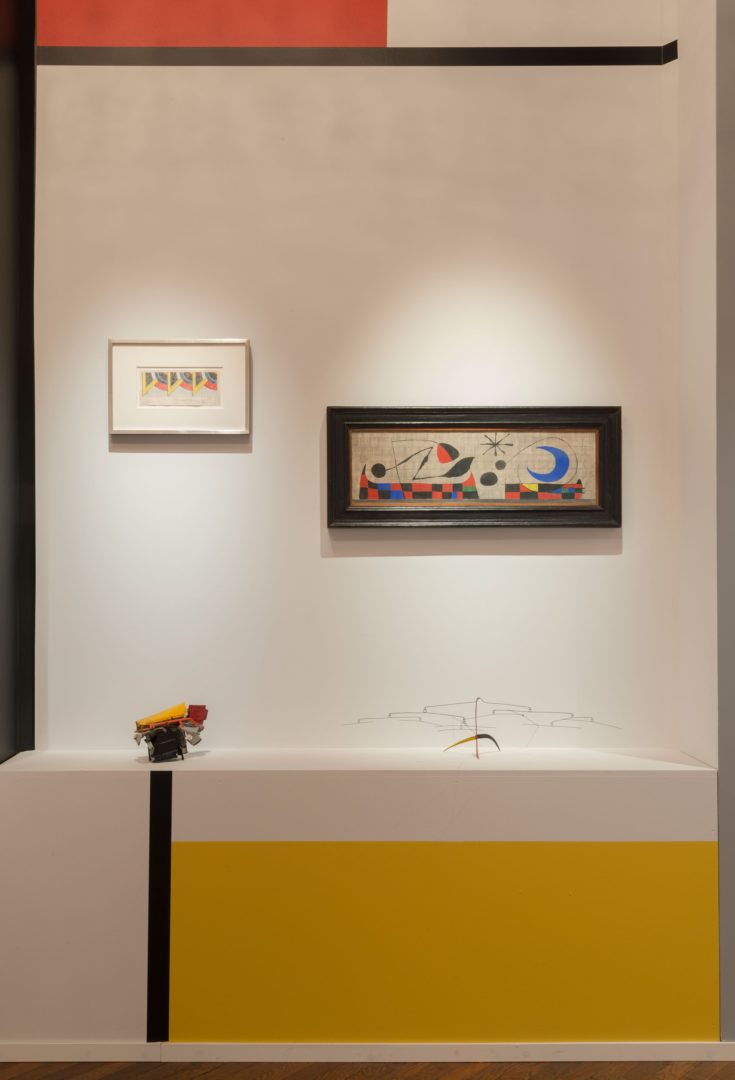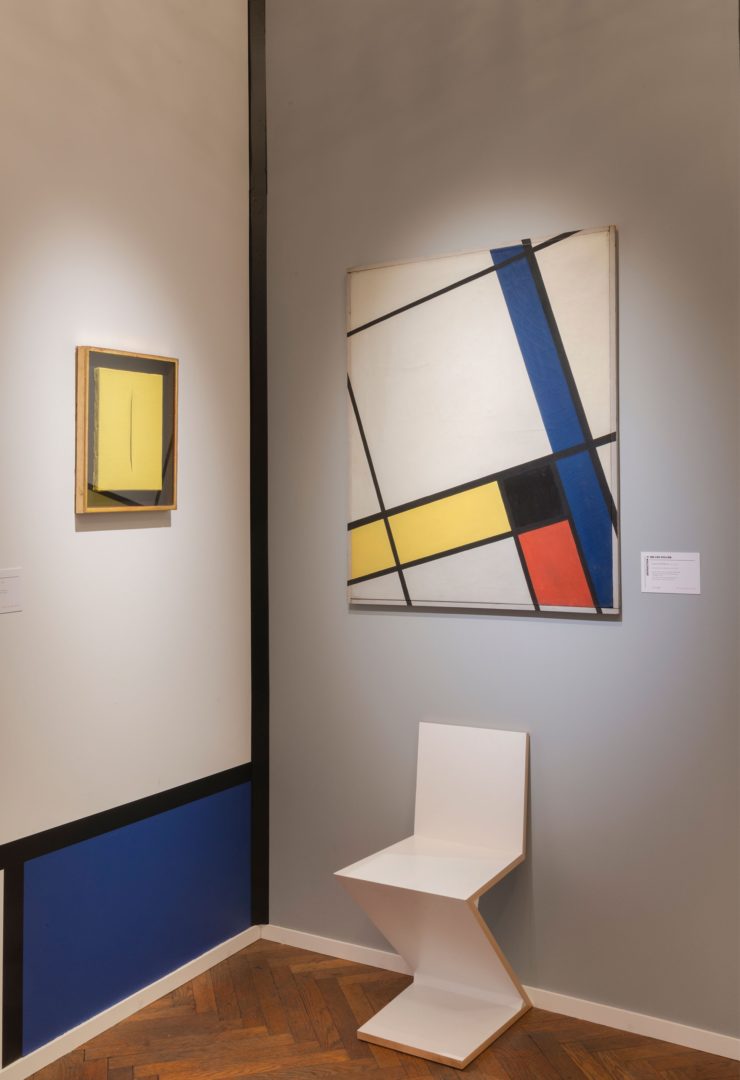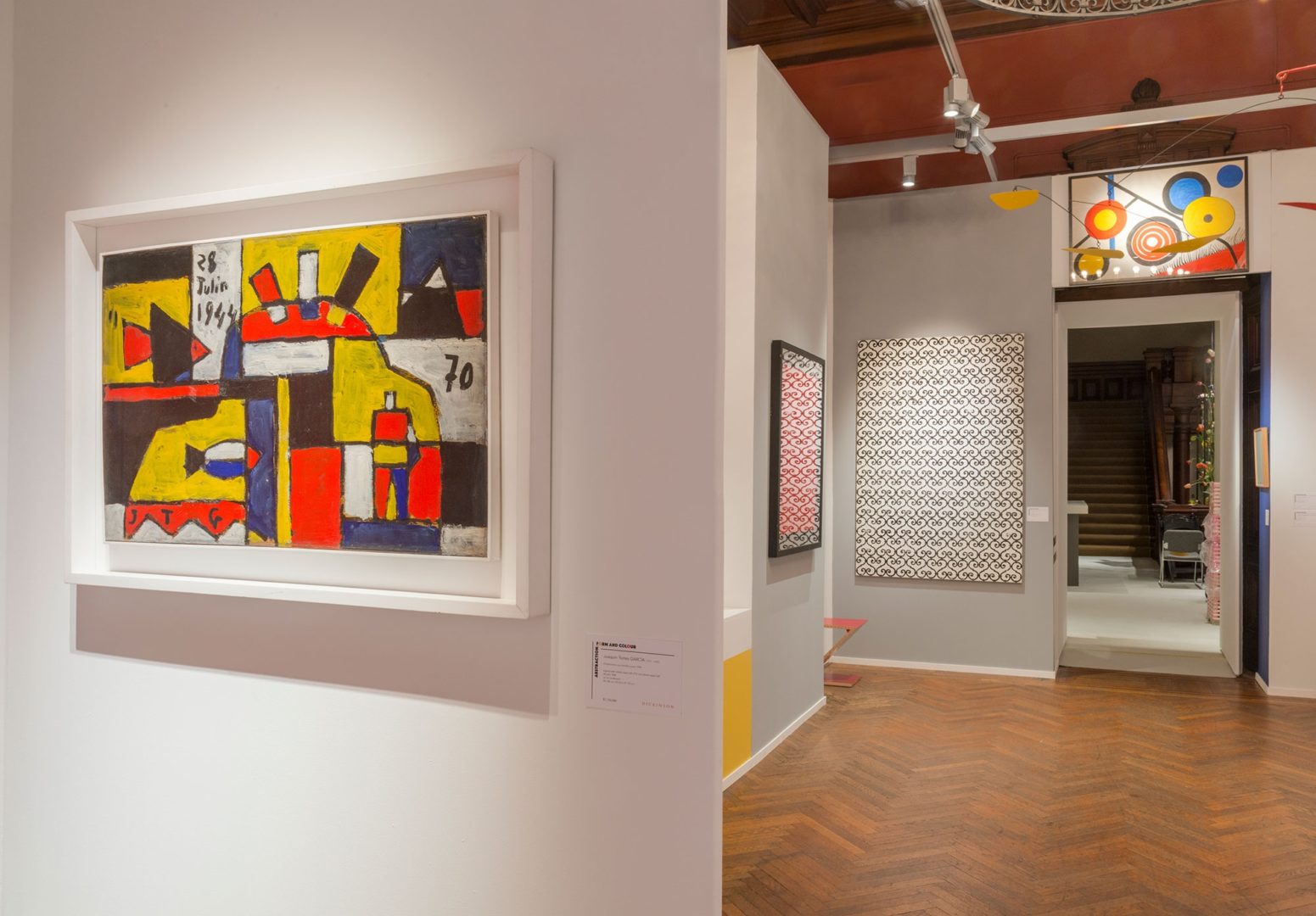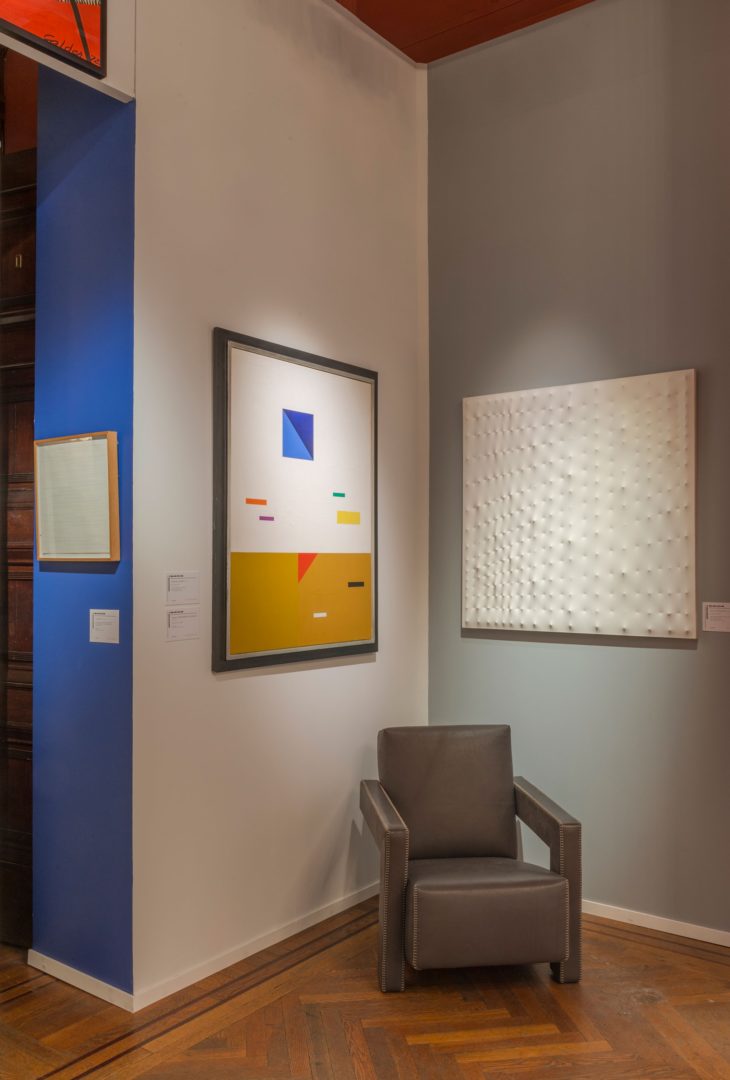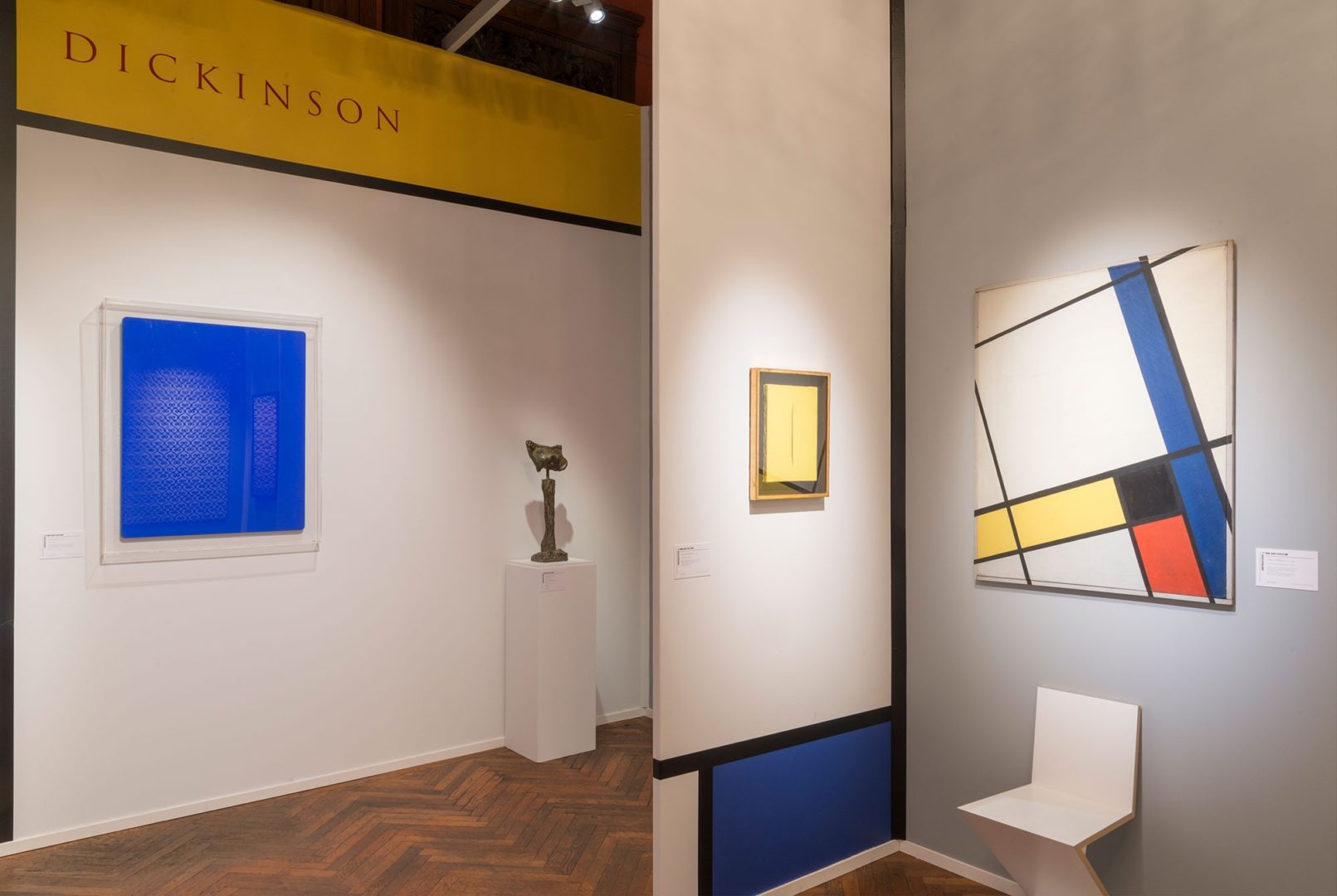Abstraction: Form and Colour
The year 2017 marks the 100th anniversary of De Stijl (‘style’), a Dutch art and design movement founded in 1917, and one that has exerted a lasting worldwide influence on modern art. Much as Mondrian and the other pioneers of De Stijl travelled from the Netherlands to America, the TEFAF brand is now crossing the Atlantic. To honour the centenary of De Stijl, and to mark the inaugural TEFAF New York Spring fair at the Armory, Dickinson will devote its stand to the De Stijl ethos and the artists who followed its fundamental principle of the paramount importance of line and colour.
De Stijl encompassed painting, sculpture, furniture, architecture and design, and its central philosophy of ‘neoplasticism’ was summarised by Piet Mondrian, who declared: ‘Art…should find its expression in the abstraction of form and colour, that is to say, in the straight line and the clearly defined primary colour.’ In other words, artists can only represent truth and the universal by rejecting representation and embracing abstraction. Dickinson will exhibit paintings by artists inspired by these principles, including those artists directly influenced by Mondrian such as Charmion von Wiegand and César Domela; Yves Klein, who devised and patented the most intense shade of blue he could conceive of for his IKB series; and members of Arte Povera and ZERO groups, including Agostino Bonalumi, Turi Simetti, Enrico Castellani and most notably Lucio Fontana, whose Tagli in primary colours are his most desirable and sought-after works.
Pieces such as the Tagli straddle the boundary between painting and sculpture, and De Stijl was equally relevant to 20th century sculptors. Alexander Calder was inspired to produce his famous mobiles, examples of which Dickinson is exhibiting, after a 1930 visit to Mondrian’s studio, where he was struck by the idea of setting Mondrian’s bold rectangles in motion. Calder’s friend Joan Miró was known for both his paintings and his sculptures, the former demonstrating his reliance on flat, intense areas of primary colour and playful black outlines. And, more recently, John Chamberlain’s Tonk series makes a primary palette three-dimensional in welded metal.
The De Stijl aesthetic resonated with contemporary architecture and design as well, and there were close ties between the movement and Walter Gropius’s Bauhaus. Dickinson will also show examples by artists who taught at the Bauhaus school, including Paul Klee and Josef Albers, both famous for their explorations of colour; and by Gerrit Rietveld, the architect and furniture-maker, who exhibited his work there.
At its peak, the De Stijl movement had a membership of only around a hundred, but in the century since its foundation, its influence has stretched around the globe. As Mondrian explained, ‘Every true artist has been inspired more by the beauty of lines and colour and the relationships between them than by the concrete subject of the picture.’

